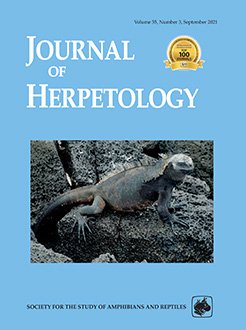Larval amphibians are important components of ephemeral wetland ecosystems, where they are abundant and perform important ecological functions. Larval pond-breeding salamanders (genus Ambystoma) are the primary vertebrate predators in fishless, ephemeral wetland systems, where they consume large amounts of aquatic invertebrate prey. However, the mechanisms in which larval salamanders affect aquatic communities are poorly understood. We compared stomach contents of larval pond-breeding salamanders from two regions in the midwestern United States to assess their diets for evidence of prey selection. We found larval salamanders exhibited selective predation for certain taxa and functional feeding groups. Our results provide a possible mechanism in which larval pond-breeding salamanders affect aquatic invertebrate communities and shape ephemeral wetland ecosystem processes.
How to translate text using browser tools
27 July 2021
Selective Predation by Pond-Breeding Salamanders in Ephemeral Wetlands of Ohio and Illinois
Brock P. Struecker,
Joseph R. Milanovich,
Mollie McIntosh,
Martin B. Berg,
Matthew E. Hopton
ACCESS THE FULL ARTICLE

Journal of Herpetology
Vol. 55 • No. 3
September 2021
Vol. 55 • No. 3
September 2021




